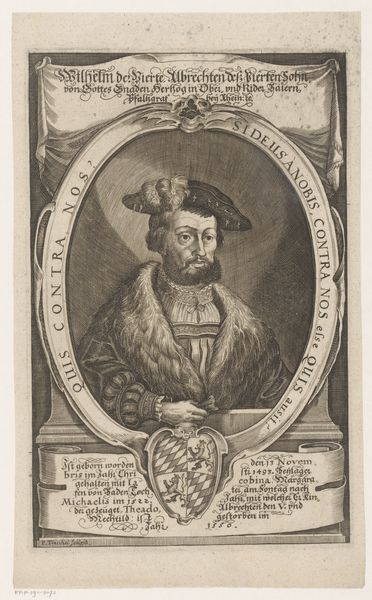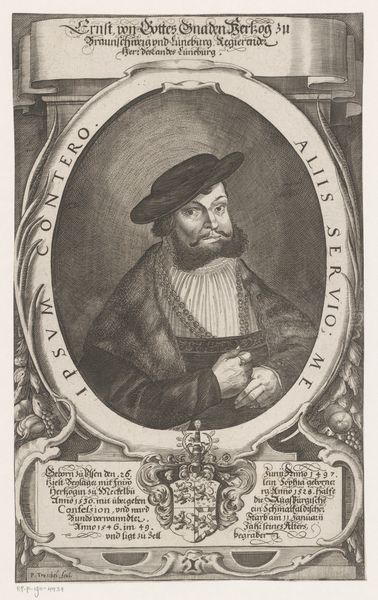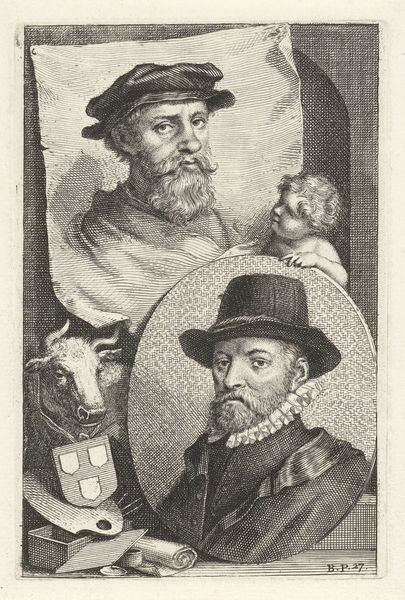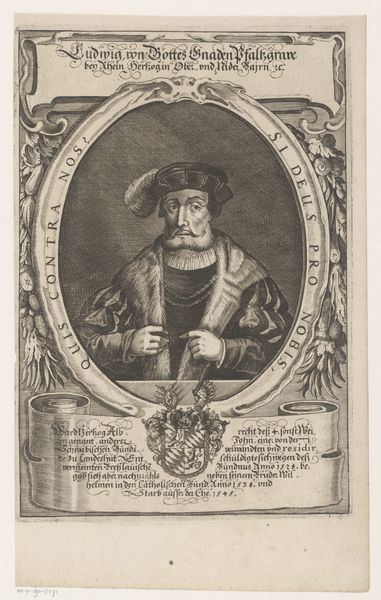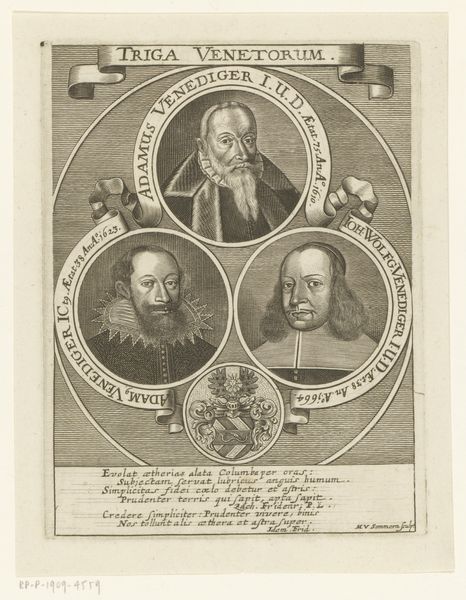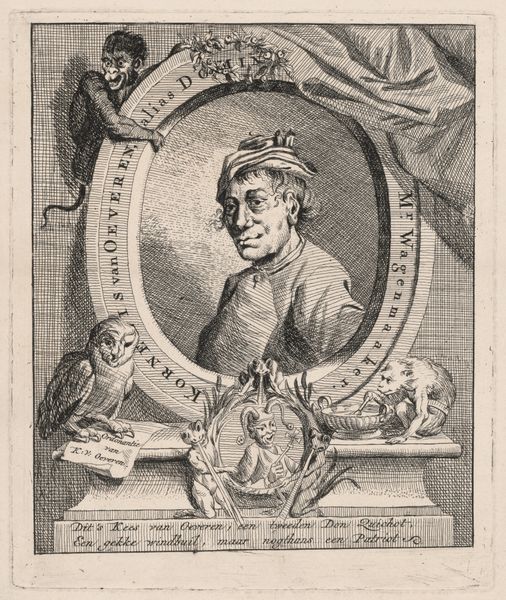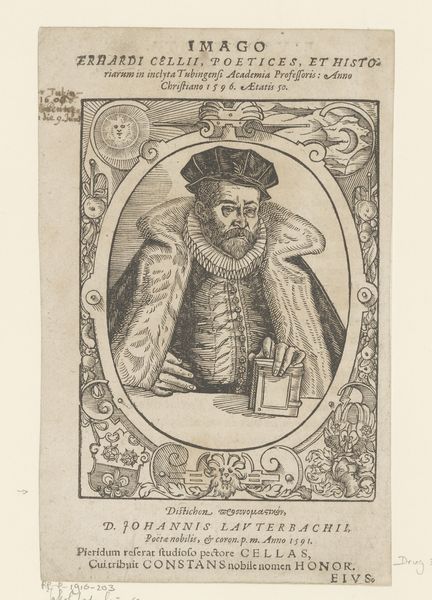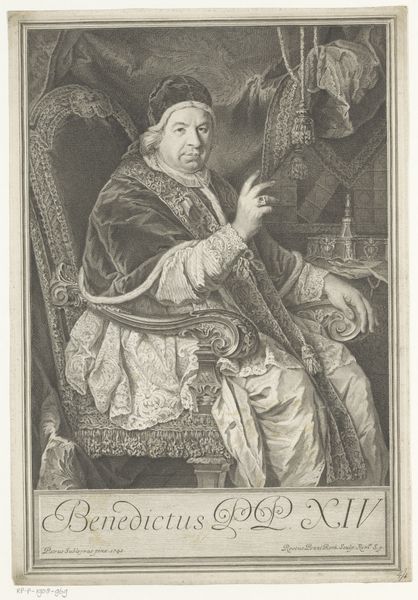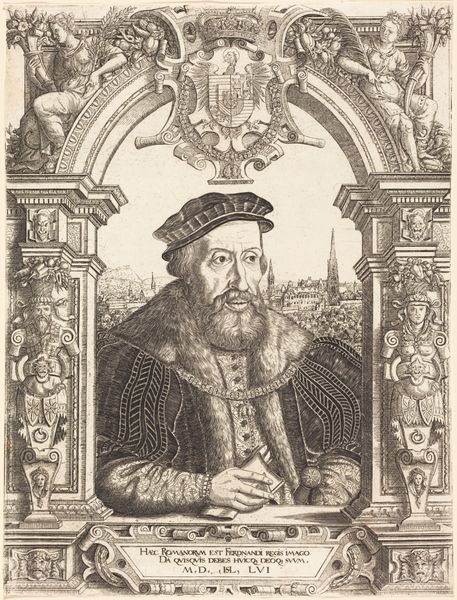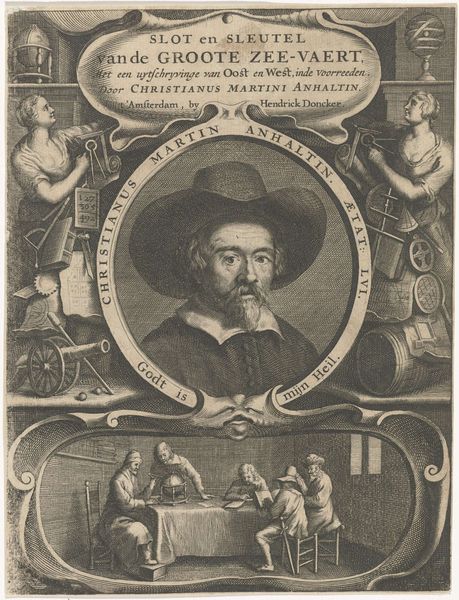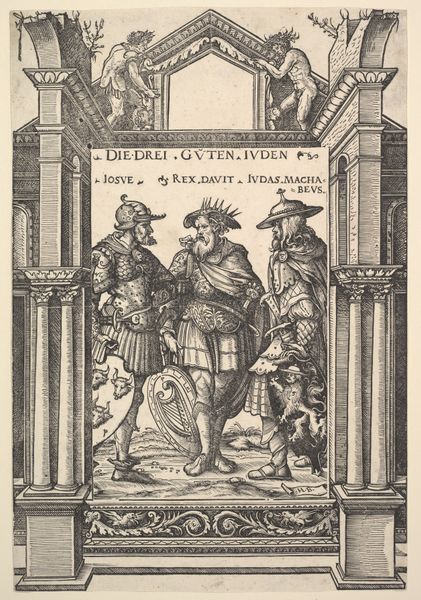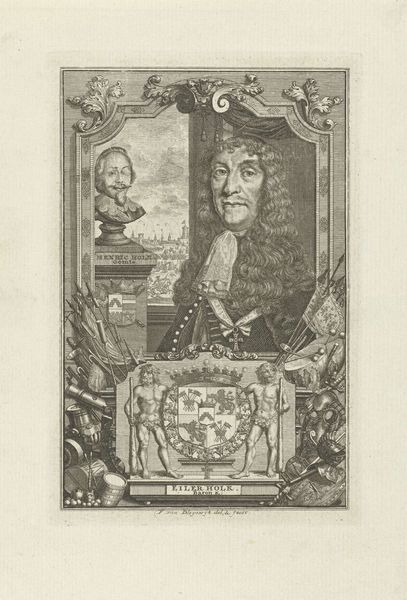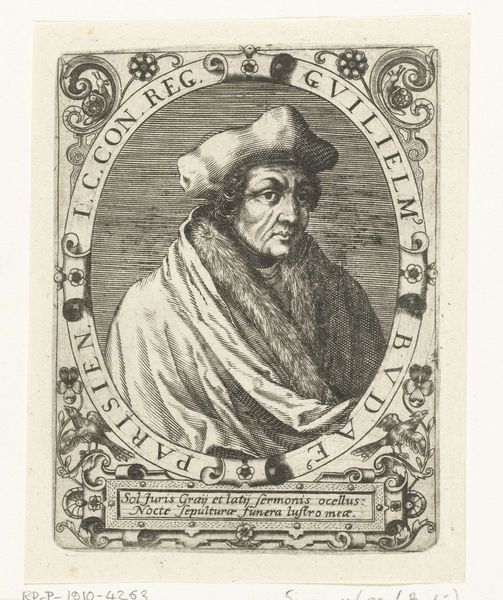
Portretten van Desiderius Erasmus, David Jorisz en Jan Snellinck 1729
0:00
0:00
jacobhoubraken
Rijksmuseum
print, engraving
#
portrait
#
baroque
# print
#
old engraving style
#
group-portraits
#
history-painting
#
engraving
Dimensions: height 155 mm, width 100 mm, height 192 mm, width 135 mm
Copyright: Rijks Museum: Open Domain
Editor: This print, "Portraits of Desiderius Erasmus, David Jorisz, and Jan Snellinck" by Jacob Houbraken, was created in 1729. The engraving features three distinct portraits nestled within an elaborate frame. The composition, especially with the angel holding up the curtain, gives it a very theatrical feel, almost like a stage. How should we interpret the cultural significance of staging these portraits together in this way? Curator: That's an insightful observation. Consider this engraving within the context of 18th-century print culture. Prints like these circulated widely, shaping public perception and memory of historical figures. Houbraken is deliberately constructing a visual narrative here. Who was likely to view this and why? Editor: Perhaps it was aimed at intellectual circles or collectors interested in historical figures? Curator: Precisely. By grouping Erasmus, Jorisz, and Snellinck, Houbraken offers a commentary on intellectual and religious history. Each man represented distinct, and at times conflicting, ideologies. Note the theatrical staging. The curtain drawn back suggests a reveal, presenting these figures for public examination and judgment. The surrounding frame, filled with symbolic motifs, further enhances this act of commemoration and evaluation. It reflects a society grappling with its past and using images to define its present. What else do you observe? Editor: It’s interesting how the frame contains scenes of ships. Perhaps this relates to the spread of ideas, like books on the sea. Also, the positioning feels hierarchical – Erasmus on top as the most esteemed? Curator: A sharp point. The ships certainly speak to dissemination of knowledge, which speaks to the Protestant Reformation. Consider how religious reform movements influenced the patronage of and approach to portraiture itself. In essence, this print is not merely a collection of portraits but a carefully constructed argument about history, belief, and public memory. Editor: That’s given me a lot to consider! I hadn’t thought about how the arrangement is also making an argument about history. Curator: And I was unaware of how that specific detail might signify prominence, which would then impact my understanding of how imagery relates to politics. Thank you for that perspective.
Comments
No comments
Be the first to comment and join the conversation on the ultimate creative platform.
